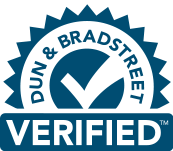Best Webinar Software Review
- EverWebinar
- WebinarJam
- GoToWebinar
Why webinars?
They’re an important part of an overall marketing plan for any business.
You can’t deny the benefits of webinars, some of which include:
- Increasing your customer’s understanding of your services.
- Generating top-notch leads.
- Boosting awareness of your brand.
If you’re ready to put the power of webinars to good use, check out this best webinar software review.
Then, we’ll dive into tips for putting on a stellar webinar – from the planning stages to the actual event and beyond.
Choosing the right webinar software
Make sure you’re choosing a robust platform, one that will make it easy to prepare for your webinar and then track attendees afterward.
There are a couple ways to spot a good webinar tool:
- It makes it easy for participants to register.
- It offers multiple ways for people to join. Some of your attendees may want to watch from their desktop, while others are on a laptop or even a smartphone.
- It doesn’t put a cap on the number of attendees.
- It isn’t filled with annoying ads.
Let’s dive into reviewing various options.
Best webinar software review
Having the right software can make all the difference in whether your webinar soars or barely gets off the ground.
Here’s a webinar platform review that will help you choose a tool:
EverWebinar
- You can schedule your webinar to play at pre-set times over the course of a day, for example, every hour.
- The tool automatically alerts people who’ve signed up to attend the webinar is just about to start.
- If you have an audience that spans multiple time zones, the tool will automatically detect the viewer’s time zone and play it at the correct time. Basically, you won’t have to figure out how to accommodate multiple time zones and schedule multiple events.
- The webinar software offers free resources for creating webinars and getting the most out of the tool.
- You’ll need to integrate this tool with your CRM (customer relationship management tool), and EverWebinar easily integrates with the major CRMs, like Mailchimp and ActiveCampaign.
- You’ll be able to harness data on your webinar with the software’s analytics tools.
WebinarJam
- You can stream your webinar to YouTube and Facebook Live, as well as WebinarJam’s private broadcasting tool.
- The software automatically records webinars.
- You can customize all of your pages so it displays your branding.
- The webinar software has tools to engage attendees, like pools, live chat and a whiteboard.
- If you want to include videos as part of your webinar presentation, you can do that too.
- WebinarJam also has analytics data to help you assess the webinar’s performance.
GoToWebinar
- You can live stream events with GoToWebinar and send recordings via email once the webinar is over.
- Scheduling is a bit trickier than WebinarJam or EverWebinar, and automation and overall features aren’t as robust either.
- You can build custom landing page forms through GoToWebinar to get people to sign up for the event.
- The software will send email reminders to them as well.
- It has engagement features you can use during the webinar, such as polls and chats, and you can send attendees files during the presentation.
- This tool also has reporting and analytics.
The best webinar software tool depends largely on your goals – and price too.
- If you’re just starting out and you’re not sure if you’ll continue with webinars, GoToWebinar will enable you to host a live webinar to a fairly small audience.
- WebinarJam is ideal for businesses who want to hold a live webinar and stream it as well – and then send a recording post-event.
- EverWebinar is probably the most robust software that lets you automate webinars and use them as a key tool for generating leads.
Preparing for a successful webinar
A lot goes into a great webinar experience, and it all starts with the prep work.
Here’s what you need to think about in the early planning stages.
1. Select the time and day
Choose a day and time that will allow for the greatest amount of people to attend.
The specifics will depend on your target demographic, but there are some generally-accepted guidelines you can follow.
For example, Wednesdays and Thursdays seem to be the best days for hosting webinars because Mondays and Fridays are typically busier for professionals.
Use Google Analytics to help you choose a time by finding out where the majority of your attendees are located and schedule accordingly.
The best strategy for choosing a day and time for your webinar involves testing: Host events on various days and times. This will give you data to get optimal attendance rates.
2. Use the correct equipment
You can have the perfect day and time, use the best platform, and still have your webinar fall flat if your attendees can’t hear you.
Don’t depend on the microphone that’s built into your desktop or laptop.
It’s best to use a headset microphone to ensure the audience can hear you clearly.
Make sure you have spare batteries, chargers and back-up equipment on hand in case something fails.
The right equipment is an important key to pulling off a great webinar without a hitch.
3. Practice makes perfect
Rehearse your presentation several times before the big day.
Run through the entire presentation using all of the equipment that you’ll need for the live event, so you can pinpoint any issues that could potentially take away from your message.
Marketing your webinar
You won’t have many people show up to your webinar if you don’t know how to market it, right?
Here are some ideas for getting the word out.
Launch an email campaign before the webinar
After an initial announcement email providing the important details, send out regular reminders.
A good schedule is to send an email to your list two weeks before the event, two days before, and a final email with the live link 1 hour before the webinar.
Include teaser videos in your emails to engage with your audience, build hype around your webinar, and help you stand out.
After the webinar is over
A great marketing plan for healthcare never leaves the audience out in the cold.
What you do AFTER the webinar is important, too. Here are some tips:
1. Keep in touch
Your first communication post-webinar with the attendees should be an email thanking them for showing up. You can also include any follow-up information, such as how to purchase a course or product.
You’ll also want to reach out to the people who signed up but didn’t attend, or viewers who didn’t watch the full webinar (your webinar platform should provide this data) with a list of highlights and a recording so they can listen on their own time.
2. Repurpose the content
To get the maximum amount of value from your webinar – and your overall marketing strategy – consider turning the presentation into other types of content, like a series of topic videos.
Use webinars to rock your marketing
Webinars should be a big piece of your overall marketing strategy.
Follow the guidelines provided here to get the most out of your event.
Prepare well, market your webinar well to get maximum attendance, and don’t forget to engage with your attendees after it’s over.
This best webinar software review should help you deliver a presentation that gets results.







